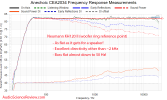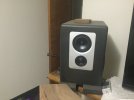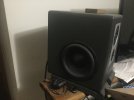Can anybody please explain, what is the real sound difference of really expensive studio monitors e.g. compared with "cheap" KRK Rokit RP5 G4? Is it more the quality on higher volumes or the low end because of the larger cabinet size or is it really much more linear in source sound reproduction? Is the quality difference more 50% to 100% or 95% to 100%? I never heard really expensive ones but I know the sound of standard guitar cabinets with standard mid speakers. I do not understand, why we need such expensive studio monitors if the source is based on such simple speakers and high quality mics. The sound quality should never be better than at the source, or?
A "flat" response is one goal, but there are other factors such as clarity, stereo imaging, transient response (particularly in the low end), separation, low distortion, features like EQ, desk reflection filters, monitor placement EQs like on Kali's stuff, etc. On most consumer speakers and headphones the low end is a jumbled mess, just a wall of mud below like 100hz, and the highs are hyped up because it's easy to mistake extra high end for clarity. IMO Beyerdynamic is a great example of this, I can't stand the hyped high end on the DT770 and 880. The current-gen KRKs are actually a pretty good entry-level speaker and obviously they can be used effectively in combination with good acoustic treatment, but you won't see them as primary speakers in high end studios.
The other factor is the room, which affects what you hear even more than the particular speakers you choose. Expensive speakers cannot fix peaks and nulls caused by room modes, extended decay times especially in the low end, distortion from reflections, flutter echo, etc. Room modes can cause +/- 20dB peaks and nulls at the listening position. In a typical untreated residential room with 8-9ft ceilings, below 100hz you'll almost always see two big peaks and one big null, the null usually around 70hz from the floor-ceiling mode. For monitoring guitar this isn't a big deal tbh, but if you're doing critical listening or production then it's much more important to be able to trust what you're hearing, which means installing some acoustic treatment to reduce the strength of the room modes. Even if you're just practicing guitar it will improve your overall experience since the music you listen to will come thru much more clearly. If I had some KRKs and was choosing between spending $5k on speakers or acoustic treatment I would choose acoustic treatment every time. And not just 3" panels filled with building insulation which do nothing for bass, I mean actual pressure-based low end absorption.
It's hard to describe sound with words but once you've been in a quality studio it's obvious. The speakers seem to disappear, you can hear every detail very clearly, you can place things precisely in the stereo field, mixes translate to other environments, etc. But again this is more a result of the room design and acoustic treatment than the expensive speakers.






